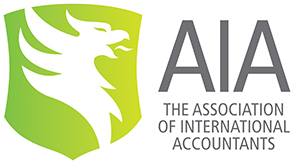Making Tax Digital for VAT: an update on digital links
Making Tax Digital for VAT (MTD for VAT) is set to come into effect from 1 April 2019 for businesses which have a taxable turnover above the VAT registration threshold (currently £85,000). In VAT Notice 700/22, published on 13 July 2018, HMRC outlined further details and confirmed its intention to give some respite to taxpayers who may struggle with the digital requirements.
Eventually, all businesses will be required to keep their records in a digital format and to have digital links between the software programs they use. However, in the first year of mandation, businesses will not be required to have digital links in place between MTD-compatible software programs.
Firms will, nevertheless, need to file VAT returns digitally using HMRC’s Application Programming Interface (API) platform.
What are digital links?
VAT Notice 700/22 states that a digital link is ‘an electronic or digital transfer or exchange of data between software programs, products or applications’. Under MTD for VAT, taxpayers are permitted to use more than one piece of software, as long as the programs are digitally linked.
The VAT notice gives some examples of digital links. HMRC will accept digital links as:
- linked cells in spreadsheets
- emailing a spreadsheet with digital records to an agent so that they can import the data into software in order to carry out a calculation (such as for partial exemption)
- transferring digital records to a portable device, such as a USB stick, to give to an agent to import into their software
- XML and CSV import and export, and the download and upload of files
- automated data transfer
- API transfer.
HMRC is keen to emphasise that this list is not exhaustive. The Notice also states that ‘the use of cut and paste does not constitute a digital link’. However, in the first year of mandation, HMRC will ‘accept the use of cut and paste as being a link’ for the relevant VAT periods. In time, however, taxpayers will need to ensure that digital links are available between the software programs they use.
Filing VAT returns
VAT returns must be filed digitally through API-enabled software, and not through HMRC’s current portal.
Businesses with up-to-date digital records will find that their chosen software can collate and prepare VAT returns with ease; firms will then be able to declare that the information is correct, and submit the return to HMRC.
HMRC will not be providing software to enable taxpayers to file their VAT returns. It has, however, compiled a list of MTD-compatible software providers. The list can be found here, and will be updated as more software providers develop MTD-compatible software programs.
Next steps
With MTD for VAT set to take effect in April next year, VAT-registered businesses will need to ensure that they are digitally compliant. If you do not already use compatible software, this may be the first thing you will need to address and begin making use of.
It is vital to ensure that you are prepared for the forthcoming introduction of MTD for VAT. We will be keeping you up-to-date with the latest information.
